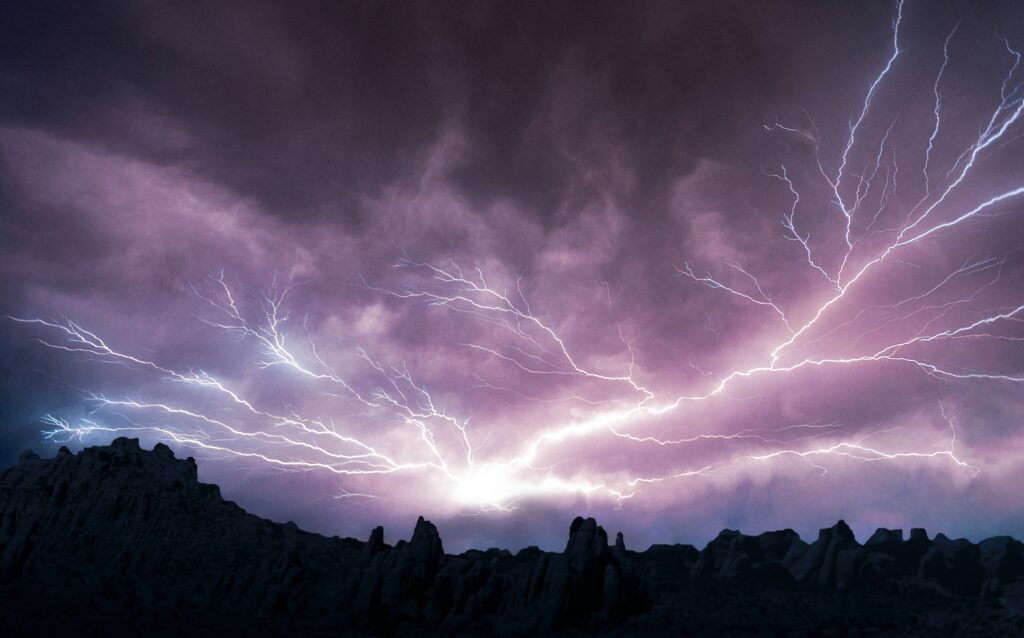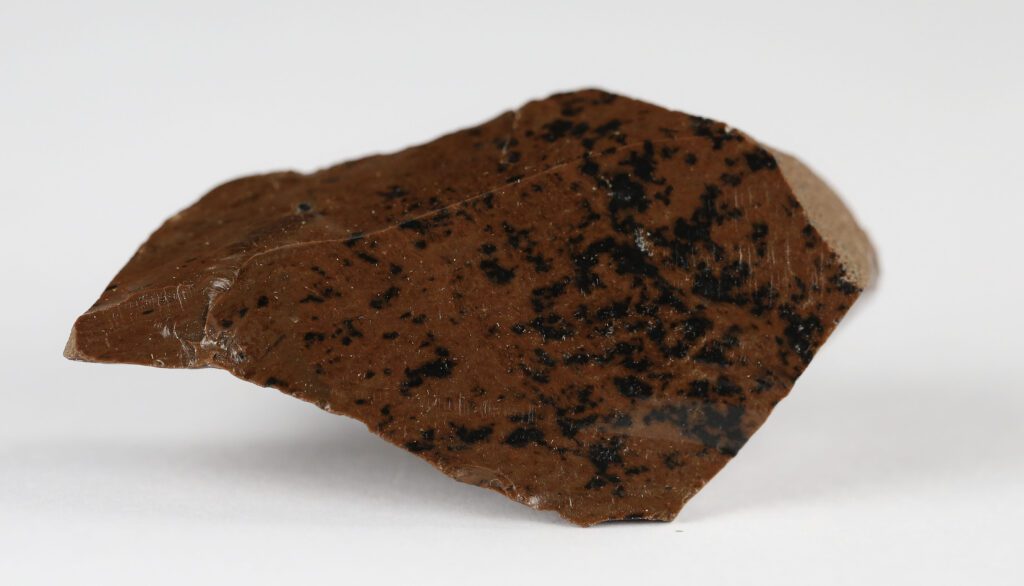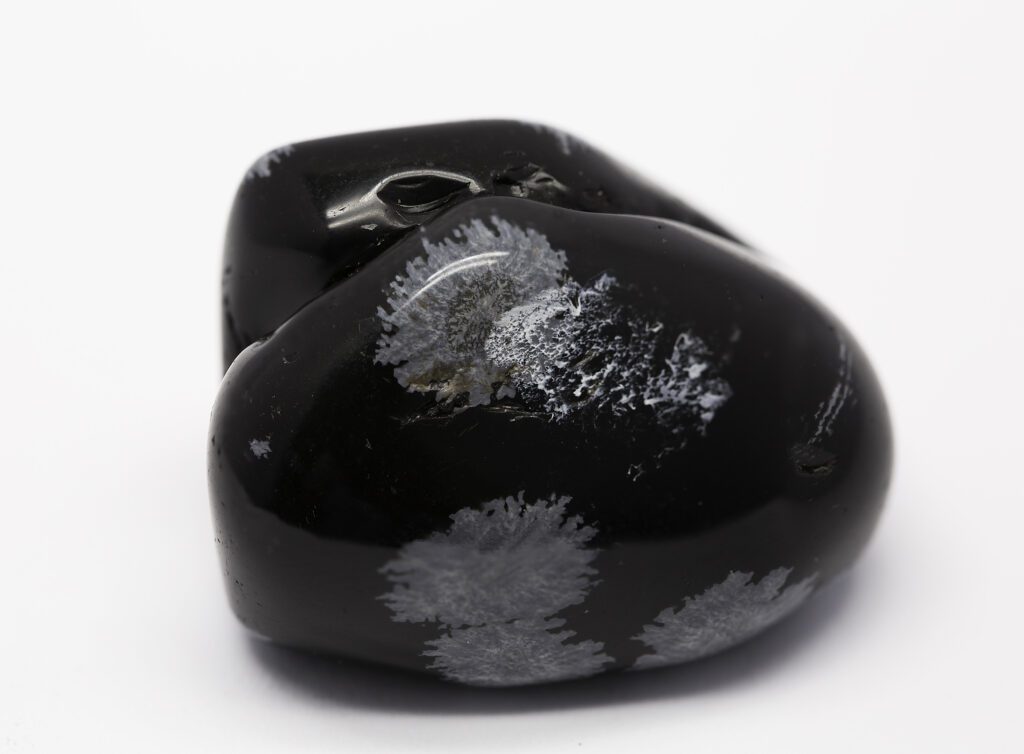
From volcanic eruptions to lightning strikes, the formation of natural glasses is a fascinating process of interest to gemmologists. Gem-A tutor, Pat Daly, uncovers the conditions that cause obsidian, rainbow obsidian and fire obsidian to form and explains what professionals in the gem and jewellery trades should look out for.
Most solid natural materials on Earth are crystalline
That is, they have a regular atomic structure or are composed of units (crystals) which have. Glass is a material which was once molten and has solidified too fast for crystals to form. The atomic structure of glass is essentially random, without the regularity found in crystals. Natural glass may be formed by volcanic eruption, the impact of meteorites, lightning strikes or friction when rocks move past each other during deep earthquakes. Of these, only the first two provide pieces which are large and attractive enough to be used in jewellery.

Natural glass can form because of lightning strikes. Photo by Micah Tindell on Unsplash.
How can glass form naturally?
Glasses formed by large meteorite impacts are called tektites if pieces were thrown high into the atmosphere to land as a strewn field hundreds of kilometres from their source. Material from two out of only four known large strewn fields, each associated with a different meteorite, are commonly seen in the gem trade. Transparent green moldavites are found mostly in the Czech Republic, and subtranslucent dark brown indochinites are in Southeast Asia. Of the two, moldavite is more suitable for faceting, though pieces are often seen in their natural shapes.
Indochinites are used for jewellery, but their dark appearance does not recommend them so well. Impact glasses also form from large meteorite strikes but have not been so widely scattered by them. Libyan desert glass, from the Western desert in Egypt, may be transparent and light yellow and can be set as unpolished pieces in jewellery or faceted for gem use. A jewelled breastplate found among the treasures of Tutankhamun is set with a scarab carved from this stone.

The presence of iron results in the deep orange-brown colour of mahogany obsidian, also known as mountain mahogany. From the Gem-A Archives.
Different types of common volcanic rocks differ in the proportions of silica which they contain. The dark basalts, which are the main products of volcanoes in Iceland and Hawaii, for example, incorporate about 50% silica. They tend to be fluid and to crystallize easily, seldom solidifying as glass. Rocks with more than about 65% silica are often involved in more explosive eruptions; more time and slower cooling are needed for them to crystallize, and it is not unusual for them to form volcanic glasses, which are called obsidian. Much material of this kind is black, almost opaque and is of little interest to jewellers.
Minerals in magma crystallize in sequence; some grow at high temperatures, others as the melt cools. It is possible for a glass to contain a small proportion of crystals. Lavas flow and elongate to platy crystals and adopt a preferred orientation as a result; their long directions, for example, may be approximately parallel. These crystals or, perhaps, flattened bubbles, may reflect light, producing a silvery to golden reflection effect. When crystals, or the layers in which they are concentrated, are a few hundred nanometres thick, thin film interference may produce iridescence, as it does in rainbow obsidian and, more dramatically, in fire obsidian.

An example of snowflake obsidian from the Gem-A Archives.
Sub-microscopic crystals may impart colour and texture to obsidian, which does not display the optical effects mentioned above. Snowflake (flowering) obsidian displays whitish spherules in black, opaque glass, and mahogany obsidian contains fibrous brownish microcrystals. Some obsidian is transparent, usually light brown or grey in colour, but it is known to be brittle and is not an ideal material for faceting. Obsidian has a glassy lustre on fracture surfaces and takes a good polish. It is widely used to make attractive and inexpensive cabochons, beads and carvings, which are popular in the gem and jewellery trades.
Main image: Transparent green moldavite from the Gem-A Archives.
…………………………………………………………………………………………….
If you are new in the gem world and wish to know more about gemstones, our mini online course GemIntro is a great way to start! Click here to access


